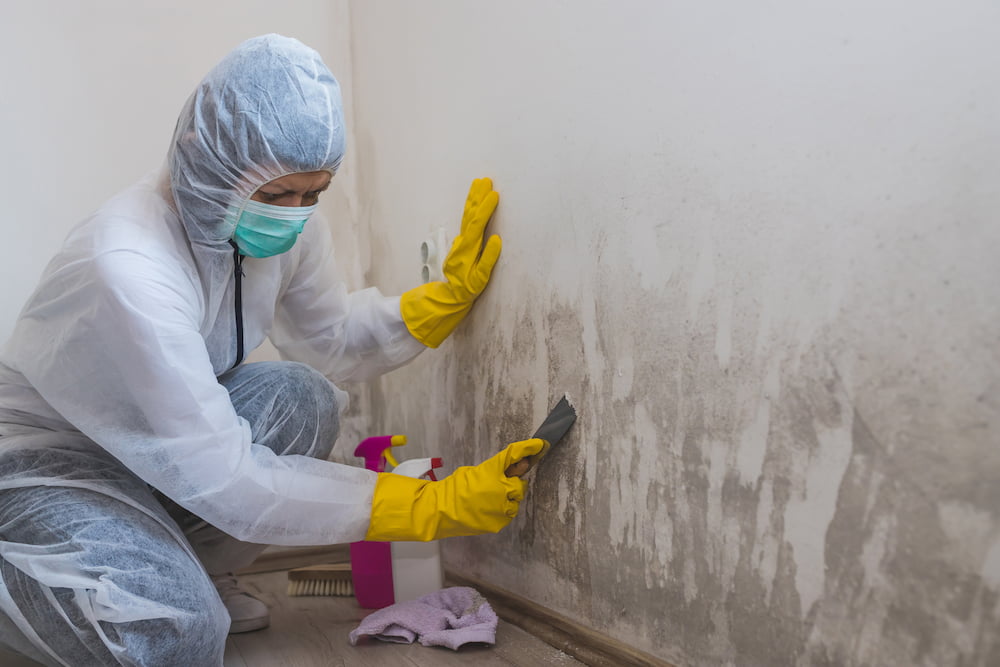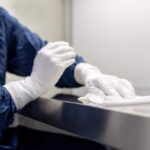Mold is a fungus that develops and spreads to wet areas with decaying substances like carpet, food, or wood. It can form in the basement, the heating, ventilation, and air conditioning (HVAC) systems, on leaking pipes, or around the patient’s damp clothing within your healthcare facility. Furthermore, unmanaged mold growth can cause infections such as allergies, chronic respiratory problems, or asthma to your patients and your healthcare staff.
Once you notice any mold in your facility by conducting Mold Inspection Near Me, it’s best to take the necessary measures to remove the mold permanently. Below are six tips to help you plan mold removal and remediation in your healthcare facility.
1- Use High-Quality Products
Purchasing high-quality products, such as Mould Removal Gel or other sprayers, can help achieve successful mold removal. These products can kill the invisible spores, assuring the mold won’t multiply in the other unaffected areas of the health facilities.
Before purchasing mold removal products, it’s ideal to check the ingredients to know if they’ll work for the kind of mold infestation present in your healthcare facility. In addition, it’s best to buy products from trustworthy vendors to guarantee that you’re getting quality items. Otherwise, you can consult mold removal and remediation professionals for recommended products. This can save you money from trying out other products.
2- Determine The Extent Of the Mold Manifestation
Before beginning the mold removal and remediation plan, you should look into the possible source of the mold and the extent it has manifested in your healthcare facility. Sometimes, you may think the only decay in your healthcare facility is the one you can see superficially. However, there might be extensive infestation hidden beneath the visible surfaces. Hence, dealing with only the visible mold won’t solve the problem.
It’d help if you had a mold remediation specialist or technician inspect your building extensively, including under drywalls, pipes, ceilings, or carpets. Once they determine the type and extent of mold in the facility, they’ll develop a plan and tell you how much it’ll cost to remove the mold.
Depending on the kind of mold present in the facility, the technicians will decide on the best method to remove the mold. They’ll also know what to put on to ensure their safety in the contaminated area. At a minimum, they should wear protective equipment like goggles, boots, and masks.
3- Relocate Your Patients
It’s essential to relocate the admitted patients and staff to pave the way for mold remediation. Some mold variants, like black molds, are dangerous and fatal if your patients and staff get exposed to them. If you find these in your facility, it’s best to relocate the patients to a mold-free room to protect them. It could be on the next floor in the hospital or transportation to the nearest hospital if your space is small.

4- Create Physical Barriers Around The Contaminated Area
You’ll have to contain the mold-infested area to prevent people from entering the site under mold removal. It’ll also help prevent the tiny mold spores from spreading out to the uncontaminated areas in the hospital. Moreover, tightly sealing the affected spaces can contain mold spores from escaping to non-infected rooms.
Cover the area from the top of the ceiling to the floor. Also, close the doors and windows entirely during the remediation. Also, the mold remediation team should cover the HVAC system and contain dust from the tiles or the working area’s drywall before tackling the infestation. This can help prevent the ventilator from transmitting contaminated air to the hospital.
Read Also
- The Benefits of Contract Labor Staffing in HealthcareThe most successful healthcare facilities today aren’t just reacting to crises—they are building workforce resilience to withstand them. Unpredictable patient demand, coupled with persistent nursing shortages, has made the traditional staffing model obsolete. Relying on mandatory overtime to cover a sudden surge in capacity is a recipe for high turnover and rising employee burnout relief… Read more: The Benefits of Contract Labor Staffing in Healthcare
- Management Reinforcement for Healthcare Providers in a Shifting SystemHealthcare is changing faster than ever. So, providers are feeling the pressure to keep up. New technology, changing patient needs, and constant rule updates make it tough for managers to stay on top. Strong leadership helps teams work better, give great care, and stay happy in their jobs. Here’s how healthcare leaders can strengthen their… Read more: Management Reinforcement for Healthcare Providers in a Shifting System
- Why Effective Disinfection Remains the Foundation of Public HealthFrom hospitals and schools to transport hubs and food production sites, disinfection is central to breaking the chain of infection and protecting community health. The COVID-19 pandemic highlighted how crucial surface hygiene and environmental control are in reducing the spread of harmful microorganisms. Yet, beyond emergency response, routine and validated disinfection practices remain the cornerstone… Read more: Why Effective Disinfection Remains the Foundation of Public Health
- How to Navigate Your Medical Assistant Career PathBecoming a medical assistant can feel both exciting and a little stressful. This job lets you work closely with doctors and other healthcare workers to help patients. But with so many different paths to take, it can be hard to know where to start or how to plan your career. Wouldn’t it be nice to… Read more: How to Navigate Your Medical Assistant Career Path
- Benefits of Enrolling in Botox Training CoursesMany people want to enhance their skills in the beauty field, and one way to do that is through Botox training. With the rising popularity of Botox, enrolling in training courses can set you on a path to a rewarding career. If you are considering this option, you might be curious about the benefits that… Read more: Benefits of Enrolling in Botox Training Courses
5- Put Up A Decontamination Area
The mold remediation specialists need a place to put their supplies and clean up. Therefore, it’s ideal to dedicate a space to set up and dress up before and after entering the contaminated area. The area should preferably be within the infected area so there’s no transfer of mold spores.
6- Cleanse The Affected Area
After the team is done with mold removal and remediation, you should remove the damaged materials from the contaminated area of the facility. These include the dry walls, cleaning supplies, paint particles, gloves, and other contaminants in the rooms. Then, it would help if you put them in sealed bags and make sure the bag is cleaned when taking it out.
After some time, the mold remediation professionals will test the area to check if the mold has been completely removed from the contaminated site. If they detect any traces, they’ll remove them before the mold spreads again.
Conclusion
Mold removal and remediation in a healthcare facility is a comprehensive process requiring adequate planning to guarantee everything goes as planned. Thus, you must know what to do to promote safety for your staff and patients, especially from deadly fungi that may linger within the facility. Furthermore, once the process is complete, it’s best to fully implement measures to fully contain mold growth within the hospital.
About Author
Mark Anthony
Mark Anthony is a New York-based healthcare worker with a deep passion for safeguarding patients’ health and safety. He’s also a passionate blogger, primarily offering tips and advice for better healthcare facilities management. He also loves reading and surfing in his free time.






